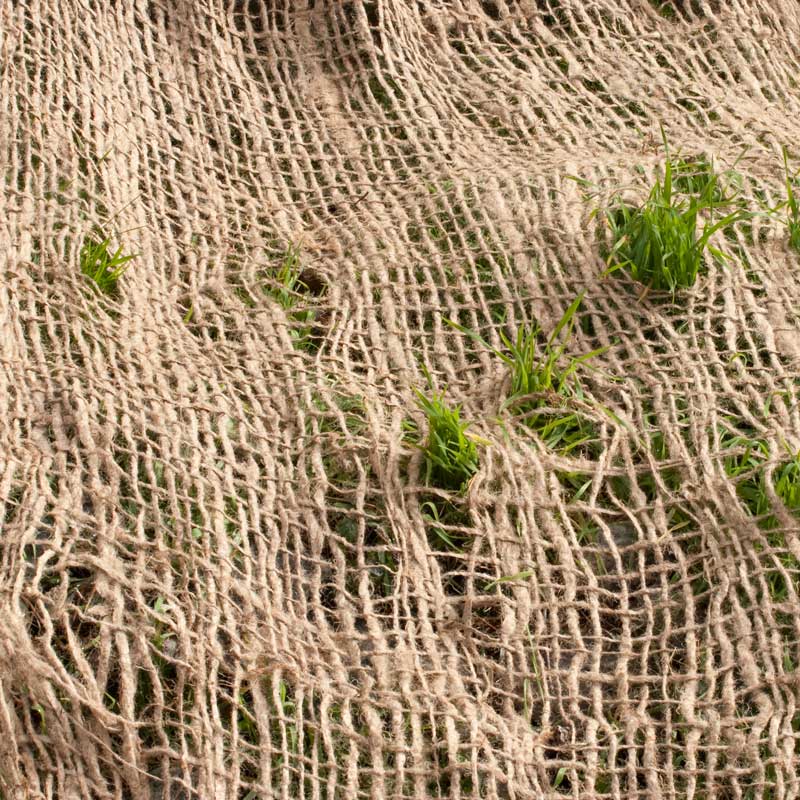- August 30, 2024
- Posted by: wellcoindustries
- Categories: Erosion Control, Jute Mesh
Introduction
Jute lawn netting is gaining popularity among gardeners and landscapers for its versatility and eco-friendly properties. Whether you’re looking to control soil erosion, suppress weeds, or maintain moisture in your garden, jute lawn netting offers a natural solution. In this guide, we’ll explore everything you need to know about jute lawn netting, from its benefits and uses to installation tips.

What is Jute Lawn Netting?
Jute lawn netting is a woven fabric made from jute fibers, a natural, biodegradable material derived from the jute plant. It is widely used in landscaping and gardening for its ability to blend seamlessly into the natural environment while offering numerous practical benefits. Unlike synthetic netting, jute lawn netting decomposes over time, enriching the soil with organic matter.
Benefits of Using Jute Lawn Netting
- Erosion Control: Jute lawn netting is highly effective in preventing soil erosion, particularly on slopes and embankments. It stabilizes the soil, allowing plants to establish roots and thrive.
- Weed Suppression: The dense weave of jute netting acts as a barrier, naturally suppressing the growth of unwanted weeds while allowing water and nutrients to penetrate.
- Moisture Retention: Jute lawn netting helps retain moisture in the soil, reducing the need for frequent watering and promoting healthier plant growth.
- Environmentally Friendly: Being a biodegradable material, jute lawn netting decomposes naturally, reducing waste and environmental impact compared to plastic alternatives.
Common Uses of Jute Lawn Netting
- Lawn and Garden Care: Jute netting is ideal for protecting newly sown lawns and garden beds from wind and water erosion.
- Landscaping and Erosion Control: Used on slopes, embankments, and riverbanks, it provides stability and supports vegetation growth.
- Agricultural Applications: Farmers use jute netting to protect crops, control soil erosion, and improve soil health.
How to Install Jute Lawn Netting
Installing jute lawn netting is straightforward but requires some attention to detail for the best results. Here’s a step-by-step guide:
- Prepare the Area: Clear the area of any debris, rocks, or weeds.
- Lay the Netting: Unroll the jute netting over the desired area, ensuring it covers the entire surface.
- Secure the Edges: Use biodegradable stakes or pegs to anchor the netting along the edges.
- Overlap Sections: If covering a large area, overlap sections of the netting by at least 6 inches to prevent gaps.
- Cover with Soil or Mulch: Lightly cover the netting with soil or mulch to help hold it in place.
Maintenance and Care for Jute Lawn Netting
While jute lawn netting is low-maintenance, a few simple practices can help extend its effectiveness:
- Regular Inspections: Check for any loose or damaged areas, particularly after heavy rain.
- Repositioning: Adjust the netting as needed to ensure it remains secure and continues to function effectively.
- Understand Degradation: Be aware that jute netting will naturally degrade over time. Plan for replacements as necessary to maintain its benefits.
Conclusion
Jute lawn netting is a versatile and eco-friendly option for gardeners and landscapers looking to protect their soil, promote plant growth, and reduce their environmental footprint. With its numerous benefits and easy installation, it’s an excellent choice for anyone looking to enhance their outdoor spaces. Consider using jute lawn netting for your next gardening project and enjoy the natural advantages it offers!
By following this guide, you’ll be well-equipped to make the most of jute lawn netting in your garden or landscape. Ready to try it out? Start today and see the difference it makes!
